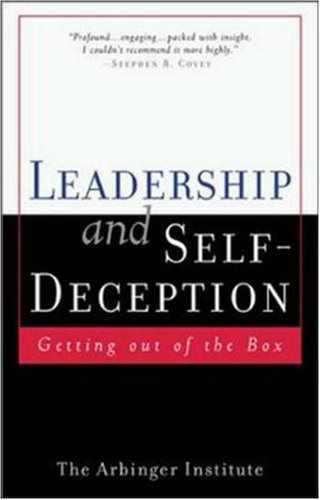For too long, the issue of self-deception has been the realm of deep-thinking philosophers, academics, and scholars working on the central questions of the human sciences. The public remains generally unaware of the issue. That would be fine except that self-deception is so pervasive it touches every aspect of life. “Touches” is perhaps too gentle a word to describe its influence. Self-deception actually determines one’s experience in every aspect of life. The extent to which it does that, and in particular the extent to which it is the central issue in personal and professional leadership, is the subject of this book.
To give you an idea of what’s at stake, consider the following analogy. An infant is learning to crawl. She begins by pushing herself backward around the house. Backing herself around, she gets lodged beneath the furniture. There she thrashes about—crying and banging her little head against the sides and undersides of the pieces. She is stuck and hates it. So she does the only thing she can think of to get herself out—she pushes even harder, which only worsens her problem. She’s more stuck than ever.
If this infant could talk, she would blame the furniture for her troubles. She, after all, is doing everything she can think of. The problem couldn’t be hers. But of course, the problem is hers, even though she can’t see it. While it’s true she’s doing everything she can think of, the problem is precisely that she can’t see how she’s the problem. Having the problem she has, nothing she can think of will be a solution.
Self-deception is like this. It blinds us to the true cause of problems, and once blind, all the “solutions” we can think of will actually make matters worse. That’s why self-deception is so central to leadership—because leadership is about making matters better. To the extent we are self-deceived, our leadership is undermined at every turn, and not because of the furniture.
We have written this book to educate people about this most central of problems, a problem that has been the exclusive terrain of scholars for far too long. But this book is about more than the problem—it offers a solution to self-deception as well.
Our experience in teaching about self-deception and its solution is that people find this knowledge liberating. It sharpens vision, reduces feelings of conflict, enlivens the desire for teamwork, redoubles accountability, magnifies the capacity to achieve results, and deepens satisfaction and happiness. This is true whether we are sharing these ideas with corporate executives in New York, governmental leaders in London, community activists in Malaysia, or parenting groups in Japan. Members of every culture participate to one degree or another in their own individual and cultural self-deceptions. The discovery of a way out of those self-deceptions is the discovery of hope and the birth of new possibilities and lasting solutions.
This book was first published in the year 2000, with the paperback appearing in 2002. The ideas about self-deception, told as they are through a fictional story that captures most readers, has made Leadership and Self-Deception a prominent international bestseller that is now available in over twenty languages. Our most recent bestseller, The Anatomy of Peace, published in 2006, builds on both the story and the ideas developed in Leadership and Self-Deception. Individually and together, these books help readers to see their work lives and home situations in entirely new ways and to discover practical and powerful solutions to problems they were sure were someone else’s.
We hope that this introduction to the self-deception problem and solution will give people new leverage in their professional and personal lives—leverage to see themselves and others differently and therefore leverage to solve what has resisted solution and to improve what can yet be improved. In organizations as varied as commercial ventures, neighborhoods, and families, what is needed most is people not just with influence but with influence for good.
Although based on actual experiences in our work with organizations, no character or organization described in this book represents any specific person or organization. However, the information that appears about Ignaz Semmelweis is an actual historical account drawn from the book Childbed Fever: A Scientific Biography of Ignaz Semmelweis, by K. Codell Carter and Barbara R. Carter (Westport, CT: Greenwood Press, 1994.)
